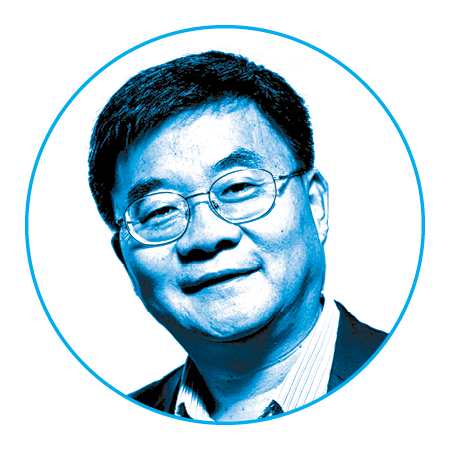
_Wei Sun
Sun is the Albert Soffa chair professor in the College of Engineering and the director of Drexel’s research center at the Shanghai Advanced Research Institute.
Inside his Biofabrication Lab, engineering professor Wei Sun is making strides toward rapid prototyping the building blocks of life using an extrusion printer, designed by him, that squeezes out a mixture of hydrogel and stem cells.
Sun’s process, which was recently published in Biofabrication, gives scientists a head start at growing living three-dimensional tissues.
“We are able to apply a 3-D printing method to grow embryoid bodies (precursors of organs) in a controlled manner to produce highly uniform ‘blocks’ of embryonic stem cells,” says Sun, who co-authored the research with colleagues from Tsinghua University in Beijing. “These ‘blocks’ are capable of differentiating to other cell types and could be used as the ‘lego bricks’ to build tissue constructs, larger structures of tissues and potentially even micro-organs.”
Sun’s bio-printer, which was originally created with the goal of printing bone and tissue scaffolds, has also been modified to print living cancer tumors. It does so by extruding the cells in a temperature-controlled hydrogel mixture and depositing a three-dimensional grid-like structure, which not only keeps them viable, but helps them grow and multiply.
“There is still a long way to go from a varying sized embryoid body to a regenerated organ, but our work provides a promising tool to facilitate this development,” says Sun.
The benefit of being able to carefully manipulate the environment that exists in a “block” of stem cells is that it gives researchers a controlled platform from which to study how and why the cells differentiate into precursors of organs.
Down the road, this could mean that scientists will be able to more efficiently grow organs in a lab by printing and growing the organ’s corresponding embryoid body.

ORGANS_TO-BE
Three-dimensional stem cell clusters formed by Sun’s bioprinter continue to grow and retain their ability to differentiate.
